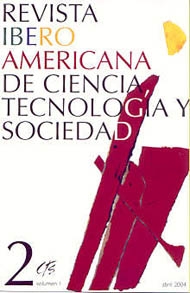Experiences and Observations from Innovation Surveys in Chile
DOI:
https://doi.org/10.52712/issn.1850-0013-1074Keywords:
National System of Innovation, innovation, R&D, TPP, Oslo Manual, Bogota ManualAbstract
This report presents a series of reflections on the results arising from the four innovation surveys performed in Chile. Three of these surveys were applied to the manufacturing industry (1995, 1998 and 2001/02); the third of them includes the mining and energetic sectors; the fourth was applied to the forestry-agricultural sector (1999/2000). The ideas presented along the following pages are aimed to make a contribution for the definition of methodological principia and for the elaboration of innovation surveys questionnaires.
Downloads
References
HOLBROOK, J.Ay HUGHES, L.P. (2001): “Improving accuracy” en Science an Public Policy, Vol. 28, N°2, abril, Inglaterra.
INDEC (2003): Segunda Encuesta Nacional de Innovación y Conducta Tecnológica de las Empresas Argentinas (1998/2001), Serie Estudios 38, Instituto Nacional de Estadística y Censos.
INE (1995): Encuesta de Innovación Tecnológica en la Industria Manufacturera.
INE (1995): “Innovation Technologiques Dans L´Industrie. Problèmes et quelques validation empiriques”, en Revista Estadística y Economía, Nº10.
JARAMILLO, H., LUGONES, G., y SALAZAR, M. (2000): Manual para la normalización de indicadores de innovación tecnológica en América Latina y el Caribe, Manual de Bogotá, OEA/RICYT, Bogotá, Tres Culturas Editores Ltda.
OECD (1997): The Measurement of Scientific and Technological Activities Proposed Guidelines for Collecting and Interpreting Technological Innovation Data - Oslo Manual.
SCHUMPETER, J. (1957): Teoría del desenvolvimiento económico, México, F.C.E.
Downloads
Published
How to Cite
Issue
Section
License
Copyright (c) 2025 CC Attribution 4.0

This work is licensed under a Creative Commons Attribution 4.0 International License.
All CTS's issues and academic articles are under a CC-BY license.
Since 2007, CTS has provided open and free access to all its contents, including the complete archive of its quarterly edition and the different products presented in its electronic platform. This decision is based on the belief that offering free access to published materials helps to build a greater and better exchange of knowledge.
In turn, for the quarterly edition, CTS allows institutional and thematic repositories, as well as personal web pages, to self-archive articles in their post-print or editorial version, immediately after the publication of the final version of each issue and under the condition that a link to the original source will be incorporated into the self-archive.











